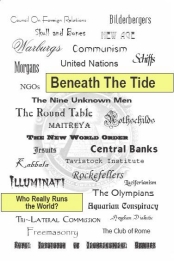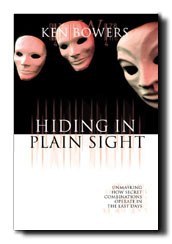Interview with a Jew-loving Ukrainian Mormon

I was baptized in June 1993. My wife was baptized in February 1991, when there were only five members of the Church in Ukraine. As I look back, the topic of Judaism has been on my mind since I can remember. Basically, it started along with my membership in the Church, after I had come back from serving in the Soviet Army.
As a S&I (CES) coordinator I travel a lot throughout Ukraine. As I visit classes in the mission branches, I often pass by famous Jewish sites. All of them are located in picturesque areas. Sometimes I visit such places to think about my life and feel closer to God. So far I have visited:
- the grave of Baal Shem Tov (in Medzhybyzh), the founder of Hasidism
- the grave of Rabbi Nahman (in Uman), the most famous leader of Hasidism
- the grave of Rabbi Levi Yitzhak (in Berdichev)
- the grave of Rabbi Nathan (in Bratslav), the disciple of Rabbi Nachman
- old synagogues in western Ukraine, including Rivne and Dubno, Lviv and Chernivtsi. Here is a site in Russian about the Jewish heritage of Ukraine. I believe they are working on the English version, but it’s not available yet. I have visited more than half of these places.
I have not read the Talmud yet, but I really like Moshe Haim Luzzato’s “Mesilat Yesharim” (The Path of the Just). He wrote it when he was 33. I also like Martin Buber’s “The Tales of Hasidim” (parables and stories) and “Roots of the Bible” by Friedrich Weinreb. The three books (Gardens) by the modern writer Shalom Arush (especially his “Garden of Peace”) should be read by every husband.
Jewish people are people of details as we know. They believe that there are no excess words in the Scriptures. Rashi wrote his commentaries with a close look at small details, but also gives a lot of contextual material. When I read some passages in the Bible that are difficult to understand, where principles can't be seen because of lack of context, I usually try to look up the same passage in the Torah with Rashi or other commentaries to see what historical background can found there. For example, in Genesis 6:1 – 8 we read about “sons of God and daughters of men” – the time when the Lord, because of the wickedness of men, gives them a certain time to repent. Rashi suggests two meanings for the expression “the sons of God” – 1. Sons of the princes and the nobles of the land; 2. Messengers of the Most High, who mingled with men. Regarding the first possible meaning he explained, by quoting other authors, that wickedness was so great that when princes or nobles of the land saw “daughters of men” beautifying themselves before entering the nuptial canopy, a son of the noble or prince would come and take them by force “from whomever they chose” - even a married woman. After that the Lord sets the countdown timer. Many details give additional insights into the situation from which we can draw principles. The stories I used to read by blocks and pages, now become words and letters. I started to underline not sentences or verses as before, but words that become a basis for principles and doctrines
When I first went to Israel (it was November and I was flying in from cold Moscow), the very smell of the air in Tel Aviv, rose bushes, trees and many other details added to my understanding of why it’s a land chosen above all other lands and why they still fight for it. I remember my first feeling of seeing the Western Wall. I could not believe I was standing there. I was touching the wall of the Temple Mount and thinking how many lives were lost and touched at this place. I could feel somehow that I was standing in the middle of the universe, that that was the place of most interest for me. I have visited quite a few countries and seen wonderful sites and historical places, but I have never felt anything like that. For me it was such a native and natural place. Another highlight – Masada. It has a very dramatic story. It was so amazing to walk among stones that have seen so much. The trip to Israel changed my understanding of the Scriptures. The distances to, colors, smell of the places I visited – every time I come across those in the Scriptures – they become alive, it expands my understanding. Also, the Garden Tomb was such a touching moment. When we were leaving, I stood on Friday night on the Mount of Olives and looked at the Temple Mount. It was difficult to part with this city, I felt as if I was leaving someone very close to my heart. Jerusalem has a living soul.
The belief in the absolute truth. Focus on the family. Working on your personal salvation by hard spiritual labor. Following the path of those who have trodden the path of righteousness before. Waiting for the Messiah (or for His return) with an single to the glory of God. Being separated from the world. I believe the Lord applied the same pattern working with the latter-day group of His covenant people as he used with ancient Israel. That’s why we have the same Root and we can find many similarities in the concepts of Judaism and Mormonism.
Mark Paredes blogs for the Jewish Journal, the Deseret News, and Meridian Magazine.







_(english).jpg) It is perhaps the most instantly identifiable mark of a Jew.
It is perhaps the most instantly identifiable mark of a Jew.

No comments:
Post a Comment